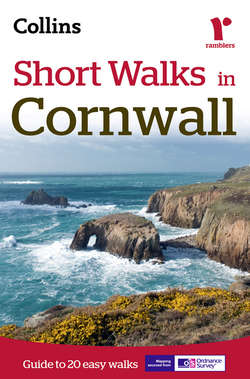Short Walks in Cornwall

Реклама. ООО «ЛитРес», ИНН: 7719571260.
Оглавление
Collins Maps. Short Walks in Cornwall
Copyright
Contents
Introduction
Walking in Cornwall
What is Cornwall ?
Geology
Wildlife in Cornwall
Human history
Walking tips & guidance. Safety
Equipment
Public Rights of Way
The Country Code
Map reading
How to use this book
Key to walk symbols
Route instructions
Route instructions
Route instructions
Route instructions
Route instructions
Route instructions
Route instructions
Route instructions
Route instructions
Route instructions
Route instructions
Route instructions
Route instructions
Route instructions
Route instructions
Route instructions
Route instructions
Route instructions
Route instructions
Route instructions
Photo credits
About the Publisher
Отрывок из книги
Cover
Title Page
.....
As with the rest of England, the structure of Cornish life was feudal and the landed gentry built substantial farmhouses. Growing prosperity and settled conditions, coupled with the religious fervour of the Cornish, resulted in a burst of church rebuilding. We owe many of the beautiful 15th century Cornish churches which remain today to this period. The Cornish gentry were wholeheartedly Royalist in the Civil War, and their men followed them into battle. In 1645, however, Cromwell’s well-trained forces moved westward and, when Pendennis Castle and St Michael’s Mount surrendered after long sieges, the Royalist cause in Cornwall was lost.
With King William III on the throne, Britain seemed to be set for quieter times. Cornwall had a flourishing fishing industry but from 1700 onwards it was mining that developed fastest. Shaft after shaft was sunk to extract ores, and, by the mid 18th century, Cornwall was the largest supplier of copper in the world. The copper boom lasted to about 1870. With new and cheaper sources being discovered abroad, the Cornish mines began to close. The dozens of derelict engine and boiler houses left behind are a familiar feature of the Cornish landscape today and they give an insight into the enormous scale of this industry in what are now relatively remote places. Several of the walks in this guide – St Agnes to Porthtowan, Cotehele and Calstock, Cape Cornwall and Levant, and Luxulyan – fall within areas designated under the Cornwall and West Devon Mining Landscape World Heritage Site.
.....